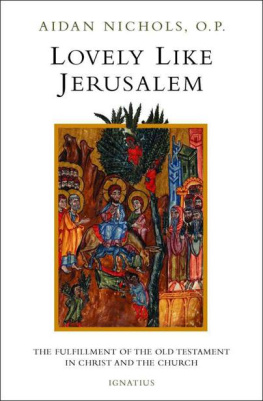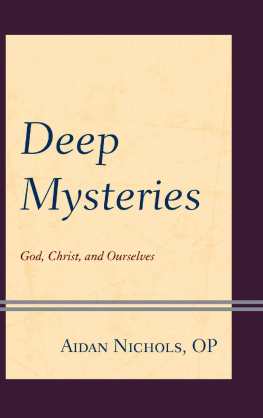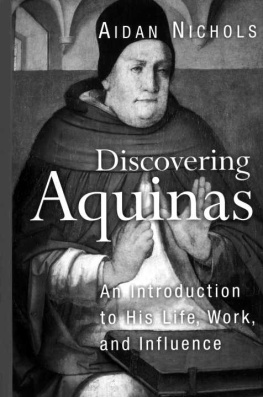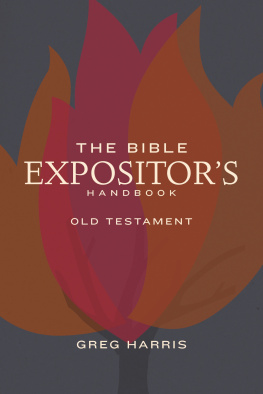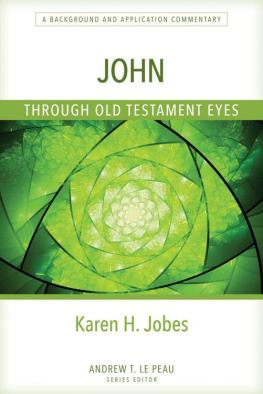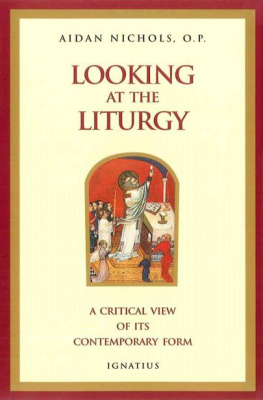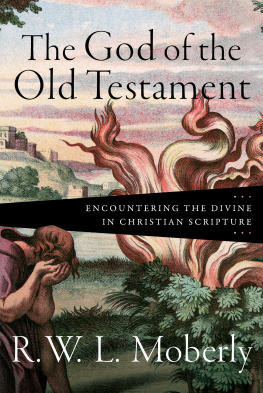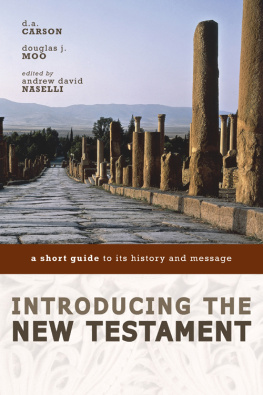Lovely, Like Jerusalem
AIDAN NICHOLS, O.P.
Lovely, Like Jerusalem
The Fulfillment of the Old Testament in Christ and the Church
IGNATIUS PRESS SAN FRANCISCO
Unless otherwise noted Scripture quotations (except those within citations) have been taken from the Revised Standard Version of the Holy Bible, Catholic Edition. The Revised Standard Version of the Holy Bible: the Old Testament, 1952; the Apocrypha, 1957; the New Testament, 1946; Catholic Edition of the Old Testament, incorporating the Apocrypha, 1966; The Catholic Edition of the New Testament, 1965, by the Division of Christian Education of the National Council of the Churches of Christ in the United States of America. All rights reserved.
Entry of Jesus into Jerusalem
Toros of Taron (13th-14th A.D.)
Vangelo: 1323. MS 6289, f. 121r.
Matenadaran Library, Erevan, Armenia
Scala / Art Resource, New York
In the portrayal of the Savior entering Jerusalem, the figures on the right are the prophets of Israel; the figures on the left, the apostles of the Church.
Cover design by Roxanne Mei Lum
2007 Ignatius Press, San Francisco
All rights reserved
ISBN 978-1-58617-168-1
Library of Congress Control Number 2006924092
Printed in the United States of America
You are beautiful as Tirzah, my love, lovely, like Jerusalem .
Song of Songs 6:4 (JB)
CONTENTS
PART ONE
AN OVERVIEW OF THE OLD TESTAMENT
PART TWO
THE PATTERN OF REVELATION
PART THREE
TWO IMPORTANT PRESUPPOSITIONS
PART FOUR
THE TYPOLOGICAL INTERPRETATION OF THE OLD TESTAMENT
PART FIVE
FATHERS AND DOCTORS INTERPRET
PREFACE
Many Catholics complain they cannot see the wood for the trees when they open the Old Testamentor, more likely, when they sample the sumptuous (possibly too sumptuous) offering of Old Testament lections given them in the Roman Mass, as celebrated according to the rite of Paul VI. With the help of some biblical students of various Christian communions (notably Evangelicals and Catholic-minded Anglicans), and a sprinkling of the Fathers and Doctors of the Church, I offer in this little book a first glimpse, according to a traditional and classical kind of perusal. Biblical citations are from the Revised Standard Version, Catholic edition, unless otherwise indicated.
AIDAN NICHOLS, O.P.
Blackfriars, Cambridge
Solemnity of the Incarnation of the Lord , 2005
PART ONE
AN OVERVIEW OF THE OLD TESTAMENT
THE TORAH
Introduction
In the opening three chapters of this book, I offer an overview of what the Old Testament is, just by way of reminding ourselves of the contents of what the Jews still call The Bible, which is by far the longer component of what the Church regards as the divinely inspired Scriptures. For their part, the Jews call the Bible Tanakh , a composite word made out of letters from the names of the three principal parts of what we call the Old Testament. And these are (1) Torah or The Instruction, the first five books of Scripture; (2) Nebiim or The Prophets, which include not only the four great prophets (Isaiah, Jeremiah, Ezekiel, and Daniel), and the twelve minor prophets, from Hosea to Malachi, but also the historical booksJoshua, Judges, Samuel, Kingscalled in ancient times The Former Prophets; and finally (3) what are more loosely described as The Writings, Kethubim , which cover everything else found in the Hebrew canon. Of course, Catholics, like the Orthodox, also recognize an additional collection of books and passages, the deuterocanonical writings, added to the Canon by the Greek-speaking Jewish community in Alexandria. If, in and through these four interrelated bodies of literature, the Old Testament can be said to have one theme, it is surely that the promises of God grow ever greater and greater. Those promises begin on what we might be tempted to call a small scale. They begin in the Torah, the first five books, the Pentateuch as Greek-speaking Jews called it, with the promise of the Land.
The Pentateuch
The Torah consists of the five Books of Moses. In the Hebrew Bible, these books are named for the opening words of the Hebrew text, just as are, in medieval and modern Catholicism, papal documents and the constitutions of the ecumenical councils. But in the Latin Bible, they are given titles that tell us what they are about, and we may think this more helpful. Thus the first book is Genesis, the Book of Beginnings; the second book is Exodus, the Book of Emigration; the third book is Leviticus, the Book of the Service of the Sanctuary; the fourth book is Numbers, the Book of the Numbering of the Host of Israel; and the fifth book is Deuteronomy, that is, the Book of the Repetition of the Law. They contain the primitive documents of the revelations, commands, and promises on which Gods covenant with the chosen people rests. From a literary point of view, the collection is a composite structure of ancient traditions, the nucleus of which goes back to Moses. It has been suggested that this collection of writings was handed down, and at some points amplified, by the priesthood, since priests were the primary tradents or teachers of tradition in ancient Israel. This may well have happened chiefly at two places in particular, both of them at central points in the hill country of Palestine. One was Gilgal / Shechem, where, in the Book of Joshua, Moses successor held a ceremony of renewing the covenant after the entry into the Land. That was probably the intended sanctuary for the Ark of the Covenant. The other was Shiloh, which we know from the Books of Samuel to have been the chief sanctuary in the period immediately before the monarchy was established. There the Ark of the Lord was kept until the wars with the Philistines when the Ark was captured and the shrine of Shiloh destroyed. After that time, in the age of the kings, the Mosaic tradition took two forms, one in the southern kingdom of Judah, the more important of the southernly tribes, where it was soon associated with the divine promises to David, the first king of Judean stock, the ruler who rescued the Ark and brought it to Jerusalem. The other form in which the tradition was passed on was in the northern kingdom, which took the name that had once belonged to the people as a wholeIsrael.
The single most important feature of the modern historical-critical scholarship that entered Catholic biblical studies in the middle decades of the twentieth century has been source criticism, the aim of which is to establish the internal documentary sources from which any given book hadpossiblybeen composed. Up until the 1970s there was a well-nigh general consensus among scholars that the Pentateuch had four such sources called in their supposed chronological order: J, E, D, and P. The J or The Yahwist source (the initial letter of that word would be J in German, in which language this scheme first emerged), was said to represent the earliest southern Mosaic tradition; E or The Elohist, slightly later, the northern Mosaic tradition; D or The Deuteronomist, a much later version from the south, under King Josiah in the seventh century before Christ; and P or The Priestly Source, the latest of all, written by priests exiled in the Neo-Babylonian Empire. But by the first decade of the twenty-first century this consensus, which was never universal, had largely collapsed. Partly this was due to disagreements as to the nature and dating of these alleged documents. Partly it was owing to arguments that maybe there never was any such preexisting set of texts at all. The main argument for the multiple sources was always the existence of repetitions and the seemingly awkward connections between various passages. But, it is said, while these would indeed seem out of place in a modern book, if they did not appear strange to the editors of the final version of the Pentateuch, why should we today find them so odd as to insist they cannot have existed in the original documents? In fact, repetitions, at least, are commonplace in ancient Near Eastern literature. Ancient people liked them, as do children today.
Next page
